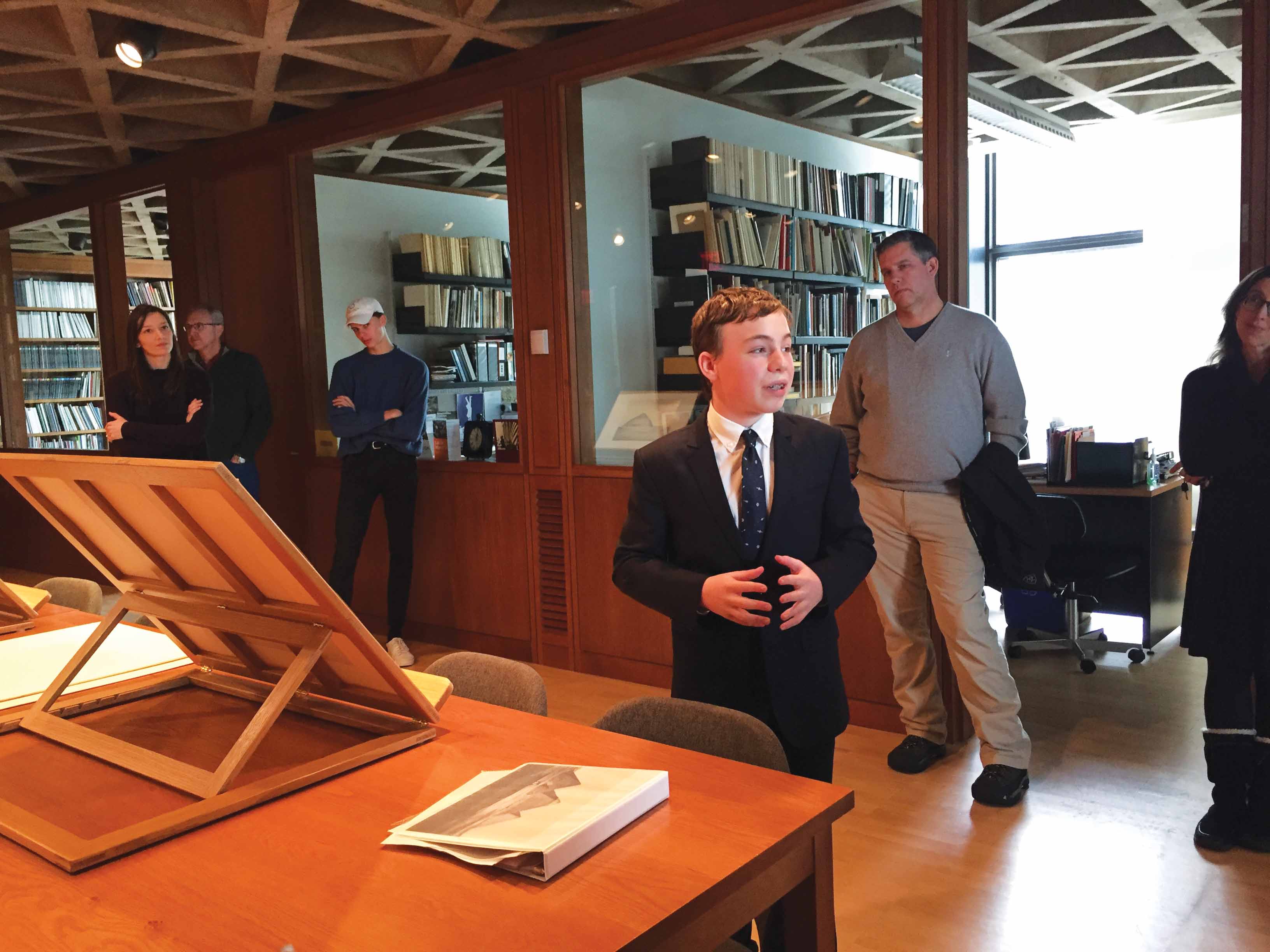
Eighth-grader Asher Hurowitz does not know where he will attend high school, let alone college, but during a private talk at the Yale University Art Gallery on Saturday, the young scholar showed his extensive knowledge of ancient Egypt.
The precocious Egyptologist spoke to a small group for 30 minutes about the life of 19th-century English photographer Francis Frith, whose book of photographs of Egypt, the Sinai Peninsula and Jerusalem was first published in 1858. Around 25 friends, family and YUAG guests gathered in a fourth-floor gallery room for prints, drawings and photographs. With measured gestures and steady cadence, Hurowitz wove his lecture from the history of specific pyramids to the photographic techniques of the Victorian Era.
“The subjects in photographs of the time had to stand still for hours at a time, so Frith was lucky to have such dedicated subjects,” said the 13-year-old Hurowitz, referring to the ancient stone structures.
In his talk, Hurowitz emphasized the archaeological value of Frith’s photographs, which were taken before the historic sites were excavated, then went on to compare the freedom of explorers of the mid-1800s with the strict regulations of the current Egyptian government.
Hurowitz disagrees with his father, Richard Hurowitz ’95, a member of the YUAG’s board of trustees, about whether his interest in Egypt developed when he was two or three years old. Richard Hurowitz and his wife Sharon Hurowitz have donated a significant amount of money to the gallery and at least one item to the collection, according to the YUAG website.
The young Hurowitz said an episode of the children’s television show “Little Einstein” about ancient Egpyt first piqued his interest in the subject, and he cited the great number of “neural pathways forming at that age” as a possible explanation for why he has devoted so much time to the niche field. While he did not discuss any specific plans he has for the future, Hurowitz said he intends to propose a major academic theory soon and has been invited to visit Egypt by the Egyptian ambassador, whom he said he met at a dinner for his “good friend” and prominent Egyptologist Nicholas Reeves. Hurowitz, who is projected to complete high school in the spring of 2021, said he hopes to continue his studies at Yale.
After the talk, Hurowitz answered audience questions, deferring some to Judy Ditner, assistant curator of photography and digital media at the YUAG. Clifford Ross ’74, a photographer who gave the photographs to the Yale gallery on extended loan and also attended Saturday’s talk, commended Hurowitz during the question-and-answer session.
“The idea behind my loan was that students and faculty would find [the photographs] intriguing,” Ross said. “I could never have dreamed that such a young, bright mind would one day bring them to life. This just shows that people from any age can engage them. I thank you. And the prints thank you.”
Jock Reynolds, who is currently on sabbatical from directing the YUAG, invited Hurowitz to the gallery this past summer after learning about Hurowitz’s interest in the Frith folio. Ditner said she made the photographs available and helped Hurowitz collect research about the folio, though she said most of his “extensive research” was his own. Hurowitz said he prepared by spending time after school each day and on weekends reading a book on Frith’s life that is housed by the Metropolitan Museum of Art’s library and then found sources cited in the book.
Susan Matheson, curator of ancient art at the YUAG, and Lisa Brody ’91, associate curator of ancient art, also attended the talk.
“The mission of the gallery is to engage people with the works whether they’re Yale students or middle school students,” Brody said. She added that she did not have any quarrels with any of the historical information and analysis Hurowitz included in his talk.
The YUAG collection includes dozens of Frith’s photographs that can be viewed by appointment.







